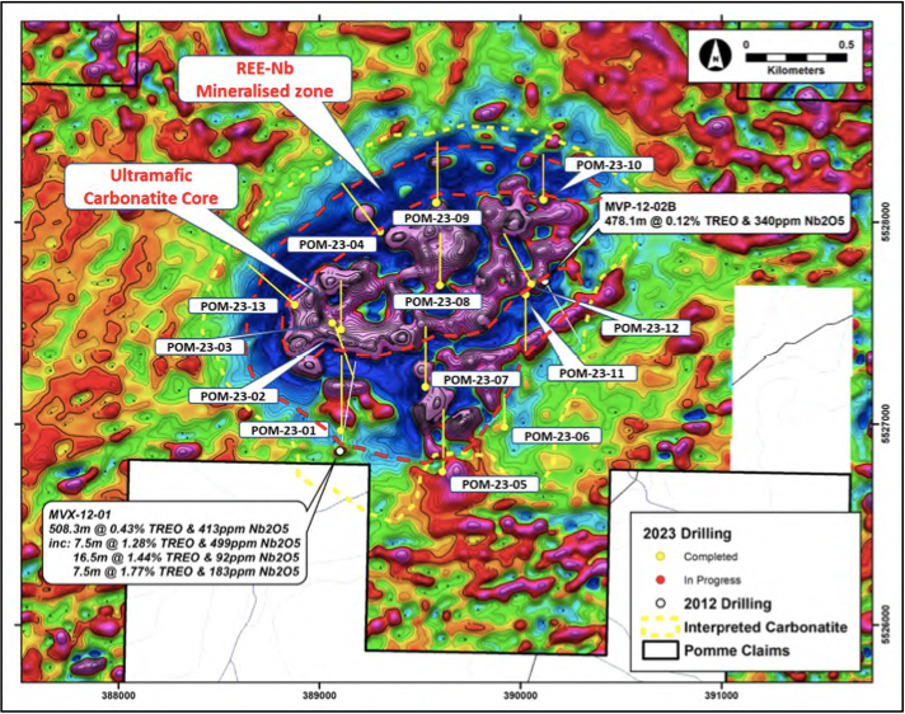MTM’s Pomme shaping up as ‘very large’ +2sqkm rare earths, niobium system
Mining
Mining
Maiden diamond drilling at MTM Critical Metals’ Pomme rare earth element (REE) and niobium project in Canada is off to a great start with widespread visual mineralisation pointing to a ‘very large’ +2sqkm mineralised system.
The company is looking to discover and define a significant resource at the project, which is a known carbonatite intrusion that is enriched in REE and niobium.
Carbonatites are a common host rock for high-grade rare earths and niobium has gained traction in recent months as a potential substitute for cobalt in lithium-ion batteries.
The Pomme project is also adjacent to a world class REE resource owned by Geomega Resources – the Montviel deposit – which has a defined total indicated and inferred resource of 266 Mt at 1.45% Total Rare Earth Oxide (TREO) and 0.14% niobium.
MTM Critical Metals (ASX:MTM) MD Lachlan Reynolds has high hopes for Pomme, with large areas remaining untested by reconnaissance drilling.
“We are now keenly awaiting the detailed assay results, which we are confident will indicate numerous zones of higher-grade rare earth and niobium mineralisation,” he said.
“Our exploration strategy is to discover zones of about 1.5% or greater total rare earth oxide grade, similar to intercepts in the original drill hole that tested the carbonatite and the nearby Montviel deposit.
“These zones could ultimately form the basis to a significant resource and may justify further drill testing.”
MTM says visual REE mineralisation was encountered in all 13 holes (for 5,718m) of the maiden program, indicating a very large +2sqkm mineralised system within the Pomme carbonatite complex.
The program has also rapidly advanced geological knowledge of the carbonatite complex, with preliminary interpretation suggesting higher grade mineralisation in a ring structure surrounding a ‘core’ of magnetic ultramafic carbonatite.
Several parts of this more favourable ring structure have not yet been tested by the drilling, which is on a very broad grid spacing.
Visual mineralisation indications supported by a hand-held pXRF device – which are not a substitute for lab assays – have highlighted numerous zones of higher-grade rare earth element and niobium mineralisation.
Geological logging and sampling of the diamond drill core is currently being finalised with assays expected over the coming weeks.

Once assays are available, the geological team will commence a full interpretation of the Pomme carbonatite complex to determine the controls on mineralisation and to identify the most prospective areas for further evaluation.
“Our exploration team will now commence work to merge the geological logs, assay results and available geophysical data in order to define high priority areas for further follow up,” Reynolds said.
“The company will also assess whether any zones of the mineralisation should be collected for preliminary metallurgical test work.”
This article was developed in collaboration with MTM Critical Metals, a Stockhead advertiser at the time of publishing.
This article does not constitute financial product advice. You should consider obtaining independent advice before making any financial decisions.